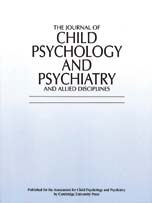Behavioural Neuroscience and Child Psychopathology: Insights from Model Systems
Published online by Cambridge University Press: 01 January 2000
Abstract
We have just emerged from “the Decade of the Brain”, yet in so many ways it was the “Decade of the Genome”. What relevance does the remarkable advance in knowledge in genetics and neuroscience over that period have to our understanding of child psychopathology? When the complexity of the genetic systems involved in behavioural regulation of relatively simple organisms such as the nematode worm Caenorhabditis elegans or the fruitfly Drosophila melanogaster is considered, the possibility of comprehending the links from genes to behaviour in the developing child seems remote. Yet, the principles of investigation in model systems are not so different to those that should apply in humans. This review draws out the parallels, and introduces recent findings from behavioural studies of C. elegans, D. melanogaster, and the laboratory mouse, as well as humans, to illustrate the point.
Keywords
- Type
- Research Article
- Information
- The Journal of Child Psychology and Psychiatry and Allied Disciplines , Volume 41 , Issue 1 , January 2000 , pp. 3 - 31
- Copyright
- © 2000 Association for Child Psychology and Psychiatry
- 11
- Cited by


